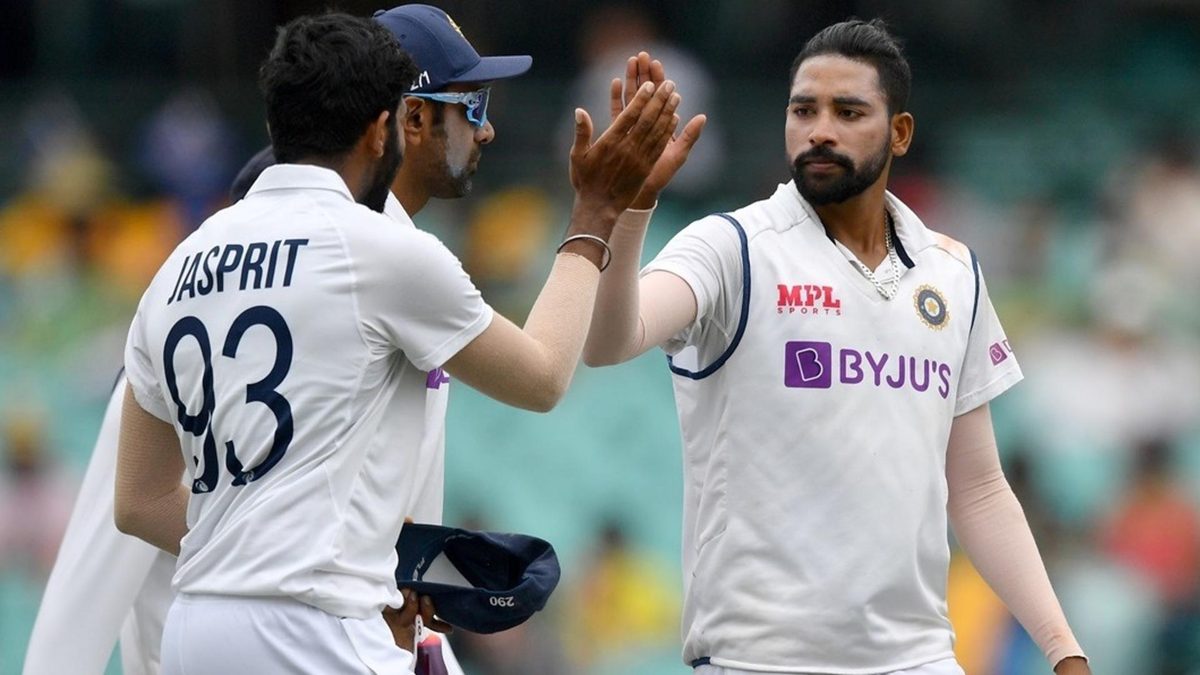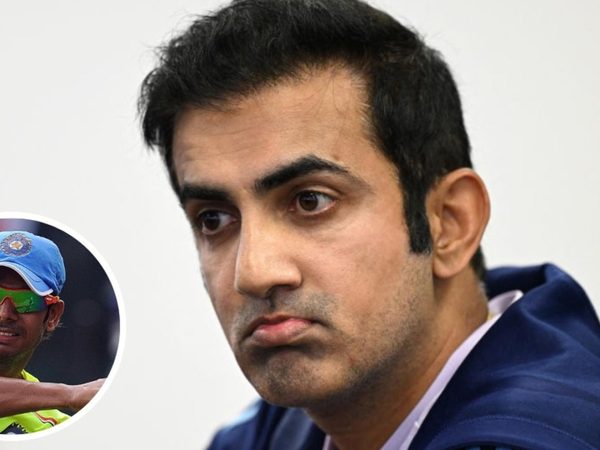
As they were sliding to a first home Test series defeat in 12 years, India named an 18-member squad for the upcoming five-match Test tour of Australia, in which they will look to extend their streak of Border-Gavaskar Trophy wins to five. Here are the takeaways from the squad named.
India won a Test series in Australia in 2018/19, and did an encore in 2020/21; at home, they beat Australia in 2016/17 and 2022/23 – all four series by 2-1 margins.
For the 2023/24 series in Australia – the first five-Test encounter between the sides since 1991/92 – India named a squad of 18 players. They left out Mohammed Shami, who has presumably not recovered fully from injury yet, and Kuldeep Yadav, who will undergo treatment to a longstanding groin issue.
India’s squad for the Border-Gavaskar Trophy: Rohit Sharma (c), Jasprit Bumrah (vc), Rishabh Pant (wk), Dhruv Jurel (wk), Yashasvi Jaiswal, Abhimanyu Easwaran, Shubman Gill, Virat Kohli, KL Rahul, Sarfaraz Khan, R Ashwin, Ravindra Jadeja, Mohammed Siraj, Akash Deep, Prasidh Krishna, Harshit Rana, Nitish Kumar Reddy, Washington Sundar. Reserves: Navdeep Saini, Khaleel Ahmed, Mukesh Kumar
Here are the talking points from the squad.
India bank on new faces
Gone are the days when conventional wisdom suggested picking experienced cricketers for major tours like Australia. The Indian selectors have backed three uncapped cricketers – Easwaran, Reddy, and Rana.
Easwaran, vice-captain of the India A side that will leave for Australia ahead of the Test squad, has been a stalwart for Bengal. With Rohit scheduled to miss one Test match, Easwaran may get a go at the top. The same India A squad also includes Reddy, Andhra’s fast-bowling all-rounder. Delhi fast bowler Rana, on the other hand, has impressed so far in domestic cricket and for Kolkata Knight Riders in the IPL.
First-class inexperience no barrier to entry
Reddy has played only 21 first-class matches and Rana nine, but they are not the only inexperienced players in the squad. The injury-prone Prasidh might have played two Tests, but his first-class tally stands at 19 games.
Upon being recalled after three years, Washington stood amidst the ruins in the Pune Test, but it was only his fifth Test match and 32nd in first-class cricket. Jurel impressed against England earlier this year, but only two of his 20 first-class matches have been outside India.
At the other end of the spectrum, the squad consists of several seasoned cricketers. India showed in 2020/21 that inexperience and rotation need not be a barrier to success. They fielded 20 cricketers – a world record for an away Test series – including five debutants, and still came back triumphant.
If you can bowl fast, you're in
Bumrah was a given, as was Siraj, with his ability to make the ball talk on Australian surfaces. Akash has impressed in India. Reddy’s ability to bat gave him an edge over the seniors. But India have also picked Rana and Prasidh for the squad – along with three reserves (who will presumably double as net bowlers), Mukesh, Saini, and Ahmed. That takes the count to nine – a substantial count even if one keeps the five Tests in mind.
At the same time, India have picked three spinners – Ashwin, Jadeja, and Washington – all of whom are all-rounders.
All that indicates the kind of attack India are likely to field. Expect them to play four fast bowlers at Perth, but do not be surprised if they include Reddy along with the four.
All-round options presents dilemma
As mentioned, all three India spinners are all-rounders (with experience of playing Test cricket in Australia), as is Reddy. India have stuck to a five-batter policy for some time, but even that does not address how many all-rounders they will pick, and which ones they will be.
At Perth, it is likely that India will play at most one spinner, but which one? Is Reddy, with 55 wickets in 21 first-class matches (albeit at an average of 26), good enough to be one of the four fast bowlers? He has impressed with the bat, but that is largely based on his prowess in limited-overs cricket. In first-class cricket, he averages only 21.45 – virtually the same as Kuldeep (21.20).
If India pick Reddy, it will probably be in lieu of a specialist fast bowler, to provide some batting support at No.8. That will almost guarantee that Jadeja is the lone spinner, at No.7.
The end of the Shardul Thakur era
For some time now, India have been selecting four fast bowlers outside Asia. Since almost all of them are rank tail-enders, India have used Thakur at No.8 to bolster the batting.
As a result, Thakur has had an unusual career, where nine of his 11 Tests have been in SENA (and one more in the West Indies). SENA Tests have accounted for 30 of his 31 wickets (including 7-61, the best figures by an Indian in South Africa), and all but 8.4 of his overs. His ability to strike has earned him a regular Test spot away from home as well as a cult status among fans.
Reddy is a different cricketer from the 33-year-old Thakur. Reddy is a harder hitter, particularly of the white ball, but does not have as much bowling experience at first-class cricket. However, Reddy is only 21, and his batting will almost certainly improve over time.
If the selectors invest in Reddy with the future in mind, it will bring the curtains down on the Test career of Thakur, the hero of the Gabba Test of 2020/21, his only Test in Australia.
Follow Wisden for all cricket updates, including live scores, match stats, quizzes and more. Stay up to date with the latest cricket news, player updates, team standings, match highlights, video analysis and live match odds.








